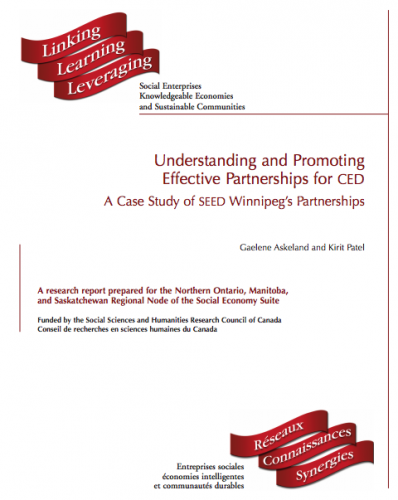Partnerships are often assumed to be a necessary, and indeed an intrinsically useful, component of CED. But partnerships can be difficult to maintain and sometimes can constrain effective CED. This case study examines data from SEED Winnipeg, a non-profit organization active in asset-building and business development (among other programs), about what makes partnerships effective and what makes them ineffective.
Findings:
SEED Winnipeg makes concerted, deliberate efforts to be a good partner to other organizations, and according to SEED and its partners, the vast majority of these relationships are, indeed, successful. This research shows that success results from good planning, appropriate due diligence prior to engaging in partnership with an organization, making good choices in partners, and putting in the effort and resources required to make the relationships work well.
The results of this research project may be helpful to a variety of organizations that are considering entering into a partnership or assessing the partnerships they currently have.
Table of Contents:
- WHAT MAKES PARTNERSHIPS EFFECTIVE?
- LITERATURE REVIEW
- RESEARCH METHODOLOGY
- DATA MANAGEMENT AND ANALYSIS
- RESEARCH RESULTS
- CONCLUSION: LESSONS LEARNED
- Partnership Negotiation
- Partnership in Progress
- Towards the End of the Partnership





